Introduction
The power of the consumer is today widely recognized as the only force capable of making or breaking a company. If a brand is considered to be ‘in-style’ or ‘hot’, it can do virtually anything and get away with it through the use of a catchy slogan or big-name endorsers. Whether we care to admit it or not, there is a great deal of truth behind the statement that we are what the media tells us we are. “Much of what we share, and what we know, and even what we treasure, is carried to us each second in a plasma of electrons, pixels and ink, underwritten by multinational advertising agencies dedicated to attracting our attention for entirely nonaltruistic reasons” (Twitchell 468). Rather than the relatively straight-forward approach to advertising taken in the days of print-only media, today’s media outlets are designed around the product or brand first and then disguised to suggest other objectives. Because of this, the world of the image-makers, today referred to as graphic designers, and the world of advertising, or convincing others to purchase a product, have merged in often very complex ways. The relationship is symbiotic – the advertiser relies on the graphic artist to put together highly sophisticated messages that will result in sales, the graphic artist relies on the advertiser and his sales to support the further development of artistic expression. The purpose of this study is to investigate the differences between advertising and graphic design with an aim to finding the many ways in which these two fields are interactive in today’s world of sophisticated marketing and branding strategies.
Advertising
In putting together an advertising campaign for a particular product or service, advertisers are typically only focused on how that advertisement can work to better promote their product or service over their competition. Because advertisers are trying to gain the attention of their target consumer group, they work hard to depict the ideals of the society. If young and slim is attractive, they will work that into their presentation in as many ways as they can. If macho and hard is the current fashion, this, too, will be reflected in the way a product is marketed. At the same time, by changing the way they combine different types of visual clues, these same media outlets can help to redefine a culture, to make it more tolerant of ecological issues, for example, or to change the way a society views gender roles. To a great extent, advertisements function by playing with our understandings of what Ferdinand de Saussure refers to as binary oppositions. These include the ideas of white/black, man/woman, rich/poor, old/young, life/death and inside/outside. Each opposition automatically excludes any elements of its opposite, immediately setting up antagonism because black excludes white, man excludes woman and rich excludes poor. Because they are understood to be opposites, the translation then becomes black equals darkness, danger, evil while white indicates purity, goodness and light. “Another example of a contested binary opposition is rational vs. emotional, in which the rational term is usually privileged and associated with men, while emotional is inferior and associated with women” (Campsell, 2006). Not limited to words alone, these oppositions are so culturally ingrained that they can be presented in terms of imagery, color associations, forms and shapes or simply through the particular flow of a font type used in an advertisement. If a characteristic of one of these categories applies, that element cannot ever enter into the realm of the other. Part of the reason for this is because the only way in which the system can remain in place is if these strict separations remain in place. The moment we come across a masculine woman who is successful and happy, the entire ideology is blown. Advertisements that function to blow the ideology are attempting to work on shock factor and may be striving to make a political or social point.
Advertising works to reinforce binary oppositions such as man/woman in the way products are marketed. In a window advertisement for a store called The Tie Rack, one print advertisement includes the image of a naked woman, tastefully posed, to sell men’s ties. The image displays the woman sitting in a provocative yet almost fetal position with nothing but the tie itself to cover her more private areas and a nice large purse to hide what the tie can’t cover. The obvious use of a woman to advertise a men’s product helps to objectify the woman as a part of the man’s wardrobe. Tying her up within the length of the tie not only serves to cover her sufficiently for public display, but also indicates that the woman is powerless without the assistance of the man, whether it is to untie her from the constricting clothing or to provide her with the shelter she needs to remain safe. That the tie is also encircling her neck indicates that her very life is dependent upon the desire of the man. That she has no clothing of her own further highlights the idea that the woman is dependent upon the man. The absence of the man in this picture, even though it is for a men’s product, indicates the ability of the man to survive with or without this tie, although without it he will not have the necessary adornments to protect his woman.
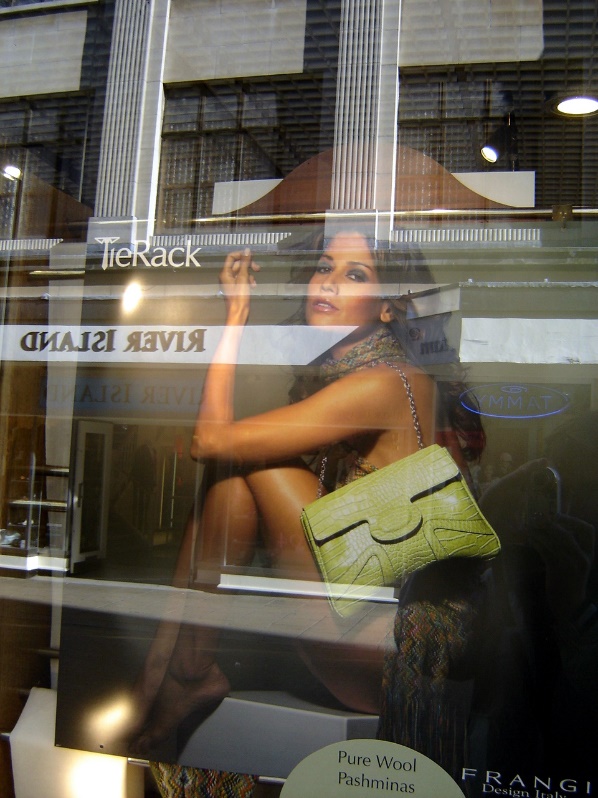
Although the advertisement may seem to depict the negative or weak side of the female as she is compared to the male accessories, the above advertisement may also be interpreted from another perspective. For example, no man generally feels confident enough about the beauty of his body to flaunt it in public this way, suggesting both that the female is more beautiful to look at generally and that she is confident in her ability to shine. This woman doesn’t need clothes to feel secure and the tie wrapped around her is both a blatant sexual invitation as well as evidence that she is shopping (denoted by the handbag and the location of her appearance) for a stylish man who can accept her instruction. How a person chooses to interpret the meaning of this advertisement thus depends upon other factors they find within the image other than the simple play on binary opposition.
In addition, binary oppositions are not always so blatant or revealing, as can be seen in the following advertisement for Philips brand light bulbs found in an issue of Time magazine:

In this advertisement, the imagery of the ad works in many ways to make a connection between their light bulb and an earth-friendly approach to energy usage. The room is filled with a nice, light sky blue color with the walls displaying soft, fuzzy areas suggesting light clouds and the furniture in blue and white stripes that remind people of every beach scene ever found. Reinforcing that idea is the large sweeping curve of the arm on the chair that resembles the sweep of a wave. The woman sitting on the chair is wearing friendly earth tones of green and brown and the shape of the light bulb she’s holding in her hand is repeated several times throughout the image – in the beads on her necklace and in the large circles on the pillow behind her particularly. Finally, a standing lamp in the background serves to suggest the need for a light bulb of some kind while that side of the image is filled with light-colored objects, mimicking light.
The language of the ad focuses on a play on words that suggests it is intended for an educated, socially aware audience. An example of this is found in the tagline for the ad, “Simplicity is a simple switch that helps you and the environment.” Because it is talking about a light bulb, the play on words is found in the use of the word ‘switch’ that implies the use of the product as well as a change in consumer patterns that is in keeping with a change in social attitudes. Excitement for the product is generated with the use of words like ‘excitement’ and ‘discover’ as the ad indicates how an ordinary woman, ‘Ashley’, is able to make a worldwide ‘difference’ for the benefit of the ‘environment’ as well as serving her own needs by reducing her bill. Finally, the ad calls consumers to action by indicating that a difference can be made ‘today’ with as little effort as simply visiting a provided website, appropriately titled ‘asimpleswitch.com’.
Several propaganda devices are used in the ad including glittering generality and band wagon appeals. Glittering generality sets the light bulb up as a preferred method of reducing energy use and conserving the environment without sacrificing personal comfort. However, very little information about this light bulb or the technology behind it is actually shared. Instead, consumers are directed to visit a website that presumably gives them this information. Band wagon appeals are made when the suggestion is inferred that everyone is making the switch, such as Ashley, who is pictured in the ad as being just an ordinary woman with a satisfying solution to a difficult problem.
Within its approach, the advertisement also builds on deeper understandings within the community through its use of imagery and color. Ancient myth holds that the Earth herself is a living entity in and of itself. It is aware and able to send its spirit out among the various creatures that depend upon it for their survival. In personified form, she is known as Gaia, or the Earth Mother, and is typically depicted as a young woman of color clad in the colors of the fields and forests. As befits an entity of this type, her living space is always depicted in the context of nature – a forest glade, a riverside grotto, a garden or even within the branches and trunk of a special tree. In its appeal to this myth, the image of the advertisement presents the woman existing in a space surrounded by sky, perhaps in a water environment as she sits on the crest of a wave and remains surrounded by the ‘watery’ glass. At the same time, though, she isn’t far removed from her forest, either, as the lamp behind her, discussed earlier, takes on the deeper meaning of the trees. Within this environment, though, she isn’t so far removed from the modern, ‘man-made’ existence that she can’t understand how a little comfort can go a long way for the modern human. Her green and brown comfortable but modern clothing further alludes to this myth, finally giving the viewer the impression that Mother Nature herself is facing us, finally proud of us for having come to her to ask what would be the best way to brighten up our homes – our entire home.
Another advertisement, attempting to entice visitors to come to the Rock and Roll Hall of Fame in Cleveland, Ohio, won the 2006 Create Awards because of its strength in combining text and image to illicit an emotional response:

This image presents a series of blank upright rectangles, seen slightly overlapping each other in what, to a modern culture, are immediately recognizable as semi-private, claustrophobic cubicles typical of large, impersonal office complexes. This interpretation is reinforced by the glimpse of office printers that can be seen just to the inside of several of the partitions. A single office chair is also visible toward the left center, highlighting the impression of a cramped office setting by providing perspective space. Everything in the image is kept to a strict neutral tone, beige-gray carpeting, off-white partitions, neutral white office equipment and grayish office chair. Into this bland color scheme, a man dressed in highly contrasting yet still office-appropriate black and white business attire is seen flying through the upper half of the image, one leg extended forward, the other leg hidden behind his own partition. In his hands he carries a guitar, his head is bent forward in action and his hands seem ready for play. The guitar is a glossy, highly toned wood, black and white electric acoustic guitar such as might be used by rock stars concentrating on a wide variety of music on stage. Other than the guitar, the only hint of real color in the image is in the green letters of the sign above the man’s head that spells out the word ‘exit.’ The viewer is thus placed within the setting of the quintessential office building and cramped working quarters of thousands of people throughout the modern world, most of who seek only to escape from such bindings. The message, then, is of a man acting inappropriately in the office in preference of pretending to be a rock musician.
The connotative message in this image brings forward the concept that music can set you free. Here we have the office worker clearly breaking not only the bounds of proper office etiquette, but also the bounds of gravity as he hovers in the air through the central area. The word exit, also seeming to hover over his head, reinforces that idea that music can set you free, but not just any music. The pose of the man is the pose of a rock musician, providing very little doubt regarding this to anyone who has ever had the opportunity to compare a rock concert with a classical guitarist’s performance. While the guitar depicted could be used for just about any type of stage music, it is this pose alone that captures the nature of the music intended. For the modern office worker, rock music conveys a sense of freedom and rebelliousness that most wish they had the option of expressing. Even this idea of a trapped soul is captured in the image as the man is depicted still clad in his business wear despite his actions. However, thanks to his ability to expand outside of the rigid bounds of the solemn and staid office persona, he is able to discover the exit, the freedom, the release all indoor workers long for. It is this sense of release that the museum is hoping to evoke in the viewers of this advertisement and this sense of excitement that they manage to convey.
However, again, the pull on the consumer’s emotions goes deeper than this immediate image of freedom and fun. It recalls the myth of the warrior youth, particularly in his action-filled pose. Replace the guitar with a rifle and the business suit with a uniform and you instantly have the image of a soldier or a hunter stalking his prey. The pose of this man immediately calls forward the hero archetype. Jungian theory indicates that the hero is the mana personality, considered to be the container for spiritual power. He is the ultimate defender, the man standing up in strength and duty for the good cause and the defeater of monstrous creatures such as dragons, gorgons or the mechanizing process of the capitalist system (Boeree, 2006). In making this connection, the advertisement is appealing to the innate desire of most Westernized viewers to be involved in something greater, something nobler and something more active than merely crunching numbers in a computer all day long.
In the sense that rock music is frequently associated with concepts of rebellion and calls for change, the role of the hero warrior is completely in keeping with the message because it is one of the few archetypes that is associated with a process itself, rather than as a simple image. The hero progresses through a series of predictable stages in order to attain full growth and development and is therefore an image that itself conveys a sense of action and progression. In promoting the Rock and Roll traditions and beliefs, exposing people to the ‘rebellious’ messages being sent, the message being sent is itself a call to action, an appeal for independent thought and radical reactions of an artistic nature. Thus the message being sent through the advertisement on all levels can be seen to support the same idea if one is familiar with the archetypes and traditions of the Western culture and symbolism.
As this study reveals, a close look at advertisements illustrates how the communication between the advertiser and the consumer occurs at a much deeper level than simple images or words on a page would seem to suggest. While the signs seem to be pretty straight-forward, giving us the impression of a woman’s living room or a man’s dream space, they convey much deeper connotations as they enable us to identify with them. In each case, words and images are combined to send a specific message intended to entice us to purchase a product or service based upon a number of rhetorical devices that seem to pass as logic. Binary oppositions allows the man to see his dreams come true with the purchase of a tie at the same time that women have the option of looking at the image as a statement of empowerment. We are able to perceive a woman we’ve never met as being a trusted neighbor and friend who is not only intelligent but also presumably well-off and happy. Yet these messages go even deeper than our surface understandings by pulling from our most ancient myths and beliefs, our cultural means of identifying ourselves with the exterior world. We are given the sense that the power is ours to change the world by identifying ourselves with the products or organizations depicted in the advert.
Graphic Design
Graphic design’s history arguably has its roots with the dawn of modern humans. From the earliest stick figures drawn on cave walls as a means of communicating – whether to a spirit world or to each other – the concepts of nonverbal communication, and graphic design, came into existence. Even when most of the world’s population was entirely illiterate, graphic design was effective in communicating some of the important messages of their society. Examples of this can be found in medieval churches, in the stained glass windows and bas relief sculptures that were intended to communicate the essential elements of major Bible stories, and in the city streets. Businesses were more often named and marked by what we would today call a logo than they were by printed words – the Boar’s Head Inn or the Blue Bull Pub. This idea of using symbols in order to send a quick and easy message to others is still a major part of life today in the form of logos and other printed materials. These images are much more refined than cave paintings, now informed by years of image technique, psychological study and greater understanding of how to use images and combined images to communicate to an audience. Although the history of graphic design has its origins in the ancient past, most experts in the field consider the starting point of modern graphic design to have taken place in conjunction with the Arts and Crafts movement of the 1860s and the Art Nouveau movement of the 1890s.
In the 1860s, William Morris started the Arts and Crafts movement as a response to the increasingly identical appearance of the factory produced objects created by machines during the Industrial Revolution. “Not only art but also everyday objects, buildings, décor, everything lacked a face, and it was the realization of its lack in this particular respect which began to make the period so cruelly conscious of its anonymity” (Cassau, 1962, p. 19). In everything they did, designers and artists working under the influence of the Arts and Crafts movement placed strong value in art created by hand with an eye toward creating limited edition prints. An example of this kind of design can be found in William Morris’ highly scrolled first page for “The Nature of Gothic.”
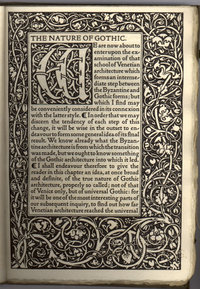
The ideas of this movement then evolved into the Art Nouveau movement of the 1880s and 1890s. This movement was characterized by an attempt to emphasize the ornamental and curving, flowing lines of nature within the more cost-effective processes of the machine-age.
The Beggarstaffs, James Pryde and William Nicholson, used simple pieces of colored cut paper arranged in different combinations to suggest simple, Japanese-inspired designs and thus ushered in the early modern era of graphic design (Chwast, 2000, p. 73). As art became reunited with the machine, it became more popular to incorporate bolder lines, simpler shapes and more functional design to more accurately work within the limitations of the machine. These processes are most effectively demonstrated in the form of the object poster, which became popular during this era (Chwast, 2000, p. 73). The concept of the object poster was a presentation of a simplified image, typically of a single product and the use of minimalist lettering to clarify the purpose.
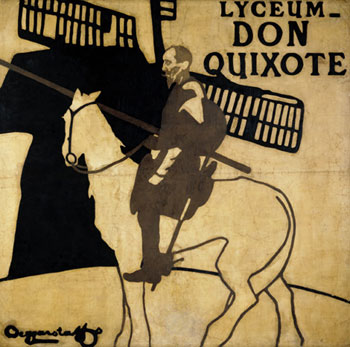
This reduction of detail helped to usher in the next major design movement – expressionism. The ideas of Expressionism were founded on the emotions behind the art and distancing imagery from the bounds of realism. “The paintings aim to reflect the artists’ state of mind rather than the reality of the external world” (Pioch, 2002).
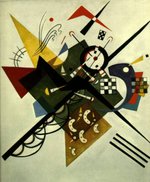
For graphic design, this meant even bolder colors, more expressive lines, elongated figures and a heightened sense of excitement associated with images as symbols rather than things (Chwast, 2000, p. 83). Having built through these stages, graphic design gained much of its strength during the Modern period. In working to condense the needed material into its most functional form, the Modern movement had a profound impact on typography and design layout. “When used together, asymmetrical typography, geometric layout, and photographic illustration defined the radical new form language of Modernist design” (Chwast, 2000, p. 89). It was during this period that the empowered social middle class gave birth to a growing graphic design industry in important areas such as advertising and packaging. Jan Tschichold, Herbert Bayer, Laszlo Moholy-Magy and El Lissitzky, all coming out during this period in time, are generally considered to be the fathers of graphic design as we know it today.
Art Deco was the first movement to directly address consumer desires through the thoughtful application of graphic design. Artists re-emphasized geometric symmetry and solid forms at the same time that they sought new ways of using new materials such as plastics and vita-glass (Chwast, 2000, p. 127). By doing this, they were able to create a completely new style that comforted war-torn consumers while still celebrating the technological advances and bright outlook of the future.
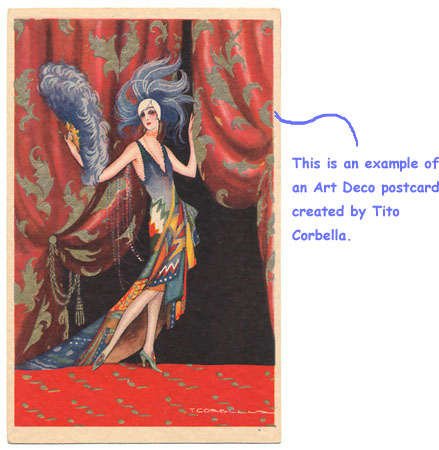
Typography and layout were the primary communicators of the style. “The official lettering on most signs and buildings at the 1925 exposition, Peignot, became one of the typographic emblems of the age. In addition, the elegant specimen sheets of Moderne display faces produced by type foundries served as paeans to the style” (Chwast, 2000, p. 127). It is also during this time period that the middle class US consumer group began to play a major factor in the use of design, enabling illustrators, graphic designers and advertising specialists to emerge as viable businesses in and of themselves. From Art Deco, the world moved into what is called the Post Modern movement. This movement is described as a complex blend of new technology and art history. It includes a bit of frivolous decoration mixed with a utilitarian, broad-based, commercial acceptability. Postmodernism is characterized by “a playful kinetic geometry featuring floating forms, sawtooth rules, and randomly placed blips and lines; multiple layered and fragmented images; pleasant pastel harmonies; discordant, letterspaced typography; and frequent references to art and design history” (Chwast, 2000, p. 221).

Hermann Zapf was the most popular typography artist during this period. In his work, he blurred the lines between serif and sans-serif fonts and brought more organic lines back into the art. Ettore Sottsass, Jr. focused on interior decoration using “cartoon-like, pastel-colored Memphis furniture, textiles, and accessories [that] were at once playful, irreverent, and critical of rigid functionalism” (Chwast, 2000, p. 221). It is an influence that continues to be seen in consumer products on the market today.
While the Post-Modern movement flourished under the influence of new technologies and practices, the introduction of desktop computers into the graphic design world caused an explosion of new ideas and treatments. With these tools, designers are now able to create nearly realistic 3D worlds within the confines of the computer. The degree of realism available through features such as lighting, shading and texturing has also sparked new areas of graphic design growth, specifically in the areas of animation and game design. The computer introduced an ever-increasing ability to digitally produce artwork which could be manipulated to any degree and reproduced in precise detail any number of times. It is easily manipulated to fit all types of sizes and formats, instantly accessible from numerous sources and quickly printed in a variety of media at once. These attributes meant digital illustration became the wave of the future for graphic design as well as many other forms of art media. It was the perfect solution to advertising needs and the ultimate expression of precise control.
Since the advent of the computer, graphic design has continued to look to the concepts of fine art as guiding principles for finished works. Holly Wales, for instance, confides, “I’m very interested in traditional design considerations like line, composition and balance – they usually play a big part in shaping my images” (Hand Made, 2007). When the approach taken is simply to fill an empty space with information, important considerations regarding how line might lead the eye around the image more effectively or grab attention in relation to the rest of the page in which the illustration is to be placed are rarely considered. Illustrator Michael Terry explains, “The value of drawing in illustration has always been paramount. Drawing ability is essential. An illustrator’s style is over laid on a sound drawing ability. No amount of stylization will cover up a lack of drawing skill. That lack will always show through or will limit the subject matter an illustrator can handle. Illustration without drawing is a sham. It is not professional it is amateurish” (Can You Draw, 2001).

In a world in which every element of the design must communicate something important, graphic designers with a keen understanding of the interaction between art, graphic design and advertising are essential.
Graphic designers continue to tend toward artistic expression in the future. “I think artists will take a variety of traditional styles and mix them with new ideas to create something more progressive with a retrospective edge. Someone like Pablo Pasadas is heavily influenced by decoupage, but adds a contemporary twist by working it up using a variety of programs. There’s also Owen Phillips, who works in a draughtsman storyboard style, then mixes it up with graffiti. This montage of styles and medias will be quite prolific in 2007” (Will Little, design, advertising and editorial agent at Advocate Art cited in Penfold, 2006). This prediction is seconded by Jonathan Kenyon, founder of New York based design house Vault49: “There’s going to be a shift towards process-driven concepts and imagery that focuses on crafted creative origins, rather than scans and imitation. With so much style impersonation by anyone computer literate, it becomes more important to highlight skills away from the keyboard and mouse” (Penfold, 2006).
Other examples of postmodern artwork transitioning into the world of digital graphic design and then out again into the world of advertising can be found within the world of the graffiti artist. Graffiti artists were much more accustomed to working quickly and knowing what they were going to do before attempting to execute it and get out of the area before being discovered ‘tagging’ private or public property. Bristol’s Nick Walker wasn’t the only individual graffiti artist to make the transition from the streets to the professional world of graphic design for commercial purposes. As SheOne indicates: “My painting can be simply applied to pretty much any brief: my current project is the SheCamo, a fabric design for the Addict clothing brand, in which painted details are used to create a repeat pattern fabric and used for high-end winter jackets, which come in a box also carrying the motifs” (SheOne cited in Blackshaw, 2007).
Thus modern graphic design has come full circle. Having found its inspirations just before the advent of the 20th century within the confines of the fine art world, particularly within the exploration of Pop Art as it explored concepts of consumerism, graphic design has continued to be shaped and changed over time by the influences of that same art world as it shifted focus, definition and attention on various theories and philosophies. Investigations into the theories and concepts of art movements such as cubism and realism have continued to shape and change the world of graphic design, causing artists to explore these concepts within the commercial realm even as they were being explored within the world of fine art. With the advent of new technology, new ability was discovered to quickly create more expressive typefaces as well as to bring the designs created by graphic artists to a much larger and more diverse realm. However, the extreme precision introduced with these new tools created another ‘return’ to the hand-made such as what was seen at the beginning of the Arts and Crafts Movement. As we move into the future, it can be expected that the processes involved in the development of art over the past century will receive the same kind of development and thoughtful integration into the world of graphic design even as graphic design comes into its own and begins to shape and change the world of advertising with its more focused means of conveying a message.
Interaction of Advertising and Graphic Design – Branding
The contemporary age is a time dominated by the commercial concepts of globalization as the art world struggles for new definition in a shifting landscape. The globalization phenomena ensures the transport of new consumers, broadened markets, distributable wealth and the possibility of international retailing through various means. This more diverse marketplace has proven to be a two-edged sword in many cases, providing corporations with greater ability to reach larger proportions of consumers yet also providing consumers with the means to communicate with each other regarding company reputation and reliability. This makes it increasingly important for companies to give full attention to the image they are projecting as it becomes an important element of their promotional efforts.
This image, the full meld between advertising and graphic design, has come to be referred to generally under the single word ‘branding.’ Branding has often been hailed as the best means of establishing a loyal customer base and instant worldwide recognition. “Corporate branding emerged as a key concept in the late 1990s” (Burt & Sparks, 2002, p. 194). The term itself has undergone an extreme transformation in recent years. Although once identified as simply the swoosh on the side of a Nike athletic shoe or the golden arches soaring over every McDonalds entrance, the term ‘branding’ has grown to encompass many aspects of a company. “Brands are not simply products or services. Brands are the sum totals of all the images that people have in their heads about a particular company and a particular mark. Brands absorb everything around them like Imelda Marcos in the shoe department at Nordstrom” (Scott Bedbury, CEO of Brandstream, a Seattle-based marketing consultancy, quoted in Kalin, 2001). Indeed the term has come to refer to not only the images a company produces in order to call their product or services to mind, but also the products sold, the services rendered, the building in which the company is headquartered or even the country in which it originated as well as the methods used to project these ideas and images to the broader public. To remain competitive in the world today, just about anything can be identified with a brand if it is so chosen – companies, museums, hospitals, even individual people (look at Martha Stewart for a prime example).
When services are excellent, products exceed expectations, lines are in high demand and the public knows your name, branding can provide a significant assist in boosting international sales. This is the positive side of branding that allows a company to walk into a new country or territory with an already hungry consumer base. According to Aaker (1996), strong brands work for the company to help them establish their proper placement within the international and local marketplace as well as assisting in the development of a strong consumer base through broad recognition of the brand. This recognition then further works for the company by serving as a weapon to counter growing competition in a shrinking market (Barwise & Robertson, 1992). Corporations can then further use this position to help launch new extensions, such as a line of athletic clothes for Nike or a new flavor for Toblerone (Aaker & Keller, 1990). However, this kind of recognition has also come to imply a much greater responsibility on the part of the company to ensure all aspects of their business are strong.
An important item to remember is the fact that globalization of information ensures customers as well as companies can share information across international borders. A company that has difficulty with a particular product or becomes a little slow in customer service response risks quickly losing its credibility as well as its customer base. In addition, it is possible for a symbol, product or practice to be completely acceptable and desired in one country while deemed highly offensive in another. If the company has a strong corporate brand, that can become difficult to overcome when trying to branch into the new territory. Therefore, it becomes imperative that the company understands the country into which they’re moving. In some cases, promoting a single brand across international lines is the best option providing full access to the greatest possible portion of the consumer market. At other times, it is best to retain local brands and smaller trade names in order to establish a ‘neighborly’ feel with the inhabitants of a given area. Determining the level of branding (international through local) as well as the type of branding (company wide i.e. Dell or product specific) can often determine whether a brand will survive or fail its most recent expansion effort. This is the negative side of branding. It has become the job of the graphic designer to become an expert in all these elements in order to produce a symbol that will appropriately advertise the concepts of an entire company and its line of products.
Brands can provide a company with a great deal of leverage in the marketplace depending upon how well it has been managed. There are four basic brand perspectives including using the brand as a product, the brand as an organization, the brand as a person and/or the brand as a symbol (Aaker, 1996). The brand as symbol is what we think of when we see the Nike swoosh or the McDonalds arch.
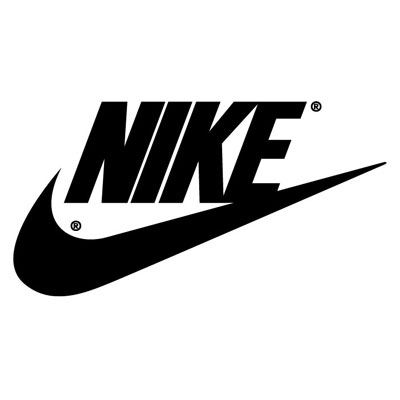

However, a good deal of the brand’s identity arises from the types of product or services offered by the company. When the product is named, the brand comes to mind and vice versa. This is what is meant by brand as product. According to Aaker (1996), attributes of a brand as organization include innovation, concern with environmental questions, drive for quality, etc. as they have been established by their founders, values, culture, commitment to excellence, technological experience, etc. Because these attributes function at a deeper level than simply a product, brand as organization is considered a stronger draw than brand as product. Stronger still is the concept of brand as a person because of the humanistic pull naturally acquired. Rather than being confined to a single face or a series of attributes, brand as person gives the company the full range of human expression as well as the ability to establish person to person relationships with its customers.
Closely related to the designed image commonly referred to as the brand are the related issues of brand equity and brand awareness, which introduce the advertisement elements of the image. Brand equity refers to the values inherent within the symbol and name of a company. It is “a set of assets (and liabilities) linked to a brand’s name and symbol that add to (or subtract from) the value provided by a product or service to a firm and/or to that firm’s customers” (Aaker, 1996, p. 8). “From a customer’s point of view, brands simplify shopping, and in the processing of information about products, and makes them feel confident of their purchase decision. Managers have also become aware of the fact that the brand has become an important company asset, and focus is needed on the creation of brand equity” (Abratt & Bick, n.d.). Assets include such concepts as brand name awareness, brand loyalty, perceived quality and brand association while liabilities can be things such as poor customer service, poor public image or poor quality products. Brand name awareness refers to the ability of a particular consumer base to recognize the brand based upon past exposure. Familiarity plays a large role in the decisions people make, regardless of what that decision might be. By promoting brand awareness, companies are fostering these positive feelings and increasing the likelihood that consumers will choose their brand over another that isn’t as well-known (Aaker, 1996, p. 21). However, brand awareness can prove hazardous to a company who has had difficulty with products, has developed a reputation for poor customer service or who has somehow gained other negative connotations along with their name. Brand loyalty, as might be presumed, refers to this stickiness of the consumer, tending to choose the same brand over and over again partly due to brand awareness and partly due to other market factors such as affordability, quality or other factors. Like brand name awareness, customer loyalty can become a market entry barrier as customers in a given area might prove reluctant to try a new brand (Aaker, 1996, p. 24). As it undergoes its evolution, the brand can cycle through all of these stages at various times and even in conjunction with each other.
Branding provides several emotional benefits that can be used to reach the consumer as well as to help establish the brand identity. “Why can the Mont Blanc brand command a premium price level as compared to a Parker? Both brands offer ballpoints or roller ball pens – yet one company charges about $5 a pen and another charges $100 a pen. The difference lies not in functional benefits but in the emotional and self-expressive benefit of having a clearly identifiable luxury brand” (“A Brand’s Functional Benefits”, 2002). By identifying itself as a luxury item through price structure, quality construction, warranties and the culture created around the product, companies like Mont Blanc are able to foster an emotional appeal with its consumers that allow them to feel part of an elite select club of luxury writers – all ideas that are tied to and reflected through the image of the brand. Although this type of appeal is being illustrated by a visible product that can be readily observed by the greater public and giving the user a further sense of pride in ownership, other brands build similar emotional appeal through such strategies as providing support (the good hands people of State Farm) or promising healthy hearty nutritious products (such as the healthy green goodness of the Green Giant vegetable brand).
According to Norman (1999), branding is the way that “the brand is projected and advertised externally [which] reflects the way it lives and works internally” (p. 29). In The Corporate Brand, Ind (1997) describes three types of activities that take place in corporate branding. First, he illustrates how the corporate brand is intangible but still gains a measure of tangibility thanks to the messages that the company releases to the public and the relationships that are developed between the company and the consumers with whom it associates. The second issue he brings up is the degree of complexity inherent in the corporate brand because of its many smaller associations and the necessity of incorporating various different messages to accommodate the different markets. Finally, because of their large reach and broad appeal, Ind states corporate branding must take on a certain social responsibility. By promoting various social issues, branding can provide a company with added value through its association with good deeds and responsible actions.
A good example of a company that realized the melding of graphic design with advertising early on is Nestle Chocolate. Henri Nestle himself developed the original Nestle logo, which is still used to help market the brand today.
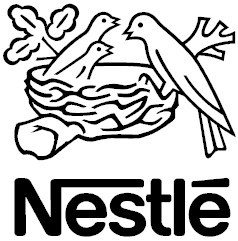
The logo depicts a mother bird standing protectively over her nest offering food to her young. According to reports, this logo not only epitomizes the identity of the brand as a protective, nurturing brand providing much needed sustenance to the infants of which the company first gained notoriety, but also was a pictogram of the family’s coat of arms, which directly translates from German as ‘little nest’ (Nestle Waters, 2005). “The logo is a symbol, not only of the Nestlé commitment to the pursuit of nutritional excellence, but also its dedication to nurturing the natural world in which we live” (Nestle Waters, 2005). Although the logo appears on most sub-brands under the parent company, it is not always displayed prominently on the label, often appearing only large enough to be discernable by someone with good eyes and a determined nature. Part of the reason for this rests on the high degree of negative equity the company has acquired as a result of their practices in undeveloped or developing countries throughout its history. “Its most controversial product is, strangely, its original one: baby formula. With a marketing policy in developing-world countries that has been deemed by many to be aggressively profit driven at the expense of consumer health, Nestlé has been riding a storm of anger in recent years from children’s organizations and health watchdogs in both the developed and the developing world” (Micheloud & Cie, 2006). Several groups throughout the world have worked to initiate a widespread boycott of the company until it adopts more socially positive initiatives, but have had little impact other than a general de-emphasis upon the parent brand in the marketing of several of its products. By doing this, the company is able to market individual brands such as NesQuik chocolate mix and Kit Kat chocolate bars that retain little to no consumer connection with the baby food products receiving such negative attention. “In spite of Nestlé’s diversification, they are and will always be mostly known for their ever popular chocolate bars and drinks” (Russell, 2006). Through its promotion of its chocolate brands, such as the NesQuik chocolate mix, Nestle is able to maintain an image of healthy, wholesome, flavorful alternatives for those who wish to indulge their sweet tooth despite the hostile press against them regarding any of its other products.
Conclusion
While advertising began as a simple means of getting the message about a product out to the buying public, advances in the art world began to change the face of graphic design. These changes had the effect of teaching the advertising world the techniques through which people derive meaning and the ways in which these techniques might best be employed for greatest advertising impact. As these two fields developed, both independently and in cooperation with each other, the concept of the brand grew into full force. The idea that a single image could be manipulated through various graphical and advertising channels to represent a complex idea – such as the Nike Swoosh coming to represent all things athletic and superior – has evolved into the marketing concept of branding. Through this process, the company is able to gain advertising mileage out of the simple presentation of its logo on the side of a billboard or on a package on the store shelf. Without communicating a single word, this image has become so powerful that it can convey the ideas the brand wishes to convey, the reasons why consumers should buy their products, at the same time that it inadvertently can remind people of not so beneficial ideas, such as the dangerous products that have been released under that brand in the past. It seems clear that the concept of branding, the full marriage between graphic art and advertising, is here to stay.
Bibliography
Aaker, David & Keller, Kevin. (1990). “Consumer Evaluations of Brand Extensions.” Journal of Marketing. Vol. 54, N. 1, pp. 27-33.
Aaker, David. (1996). Building Strong Brands. New York: The Free Press.
Abratt, Russell & Bick, Geoffrey. (n.d.). “Valuing Brands and Brand Equity: Methods and Processes.” Nova Southeastern University; University of the Witwatersrand.
Barwise, Patrick & Robertson, Thomas. (1992). “Brand Portfolios.” European Management Journal. Vol. 10, N. 3, pp. 277-285.
Blackshaw, Ric. (2008). “Urban Digital.” Computer Arts. Bath: Future Publishing Limited. Web.
Boeree, C.G. (2006). “Personality Theories.”Shippensburg University.
Brand, M. J. & Bax, E.H. (2002). “Strategic HRM for SMEs: Implications for Firms and Policy.” Education and Training. Vol. 44, I. 8/9, pp. 451-63.
“(A) Brand’s Functional Benefits vs. Emotional Benefits.” (2002). My Brand Journal. Vol. 4.
Burt, Steve L. & Sparks, Leigh. (2002). “Corporate Branding, Retailing and Retail Internationalization.” Corporate Reputation Review. Vol. 5.
“Can You Draw Part I.” (2001). AOI Information. Web.
Campsell, Steve. (2006). “Binary Opposition.” English Biz.
Cassou, Jean, Emil Langui and Nikolaus Pevsner. (1962). Gateway to the Twentieth Century: Art and Culture in a Changing World. New York: McGraw-Hill.
Chwast, Seymour and Steven Heller. (2000). Graphic Style: From Victorian to Digital. New York: Harry N. Abrams.
Create Awards. “Easy Listening.”Rock and Roll Hall of Fame and Museum.
“Hand Made!” (2007). Computer Arts. Bath: Future Publishing Limited. Web.
Ind, N. (1997). The Corporate Brand. Basingstoke: Macmillan.
Kalin, Sari. (2001). “Brand New Branding.” Darwin Magazine. CXO Media. Web.
Lukas, Scott. (2004). “The Tie Rack.” [photograph].
Micheloud & Cie. (2006). “Henri Nestle.” Living and Investing in Switzerland.
Nestle Waters. (2005). “History of Nestle Waters International.” Nestle Waters North America. Web.
Norman, A. (1999). “Asda: The Accelerated Repositioning of a Brand.” Brand Warriors. F. Gilmore (Ed.). London: Harper Collins, pp. 25-35.
Penfold, Mark. (2006). “Future Trends.” Computer Arts. Bath: Future Publishing Limited. Web.
Philips light bulb ad. (2007). Time Magazine. Vol. 170, N. 20.
Pioch, Nicolas. (2002). “Expressionism.”The Web Museum, Paris.
Russell, Michael. (2006). “Chocolate – History of Nestle Company.” Ezine Articles.
Twitchell, James. (1996). The Triumph of Advertising in American Culture. Columbia University Press.